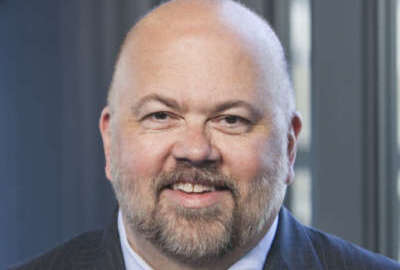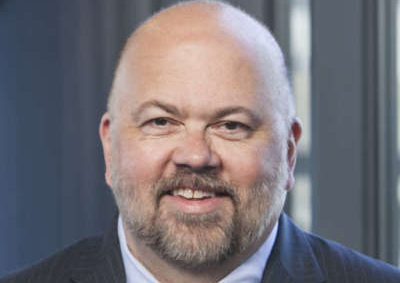
Best Places to Work: What the Partnership’s new rankings tell us
Having political and career leaders engage with the workforce in a constructive and respectful manner is not a Democrat/Republican issue. It is a matter of...
This column was originally published on Jeff Neal’s blog, ChiefHRO.com, and was republished here with permission from the author.
Best listening experience is on Chrome, Firefox or Safari. Subscribe to Federal Drive’s daily audio interviews on Apple Podcasts or PodcastOne.
The Partnership for Public Service has released its 2018 “Best Places to Work in the Federal Government” rankings. The news is not encouraging. Employee engagement dropped in 59.1 percent of the federal organizations included in the rankings, with only 39.6 percent showing increases. Comparing the numbers to the private sector, the report shows that the average government engagement score of 62.2 lags behind the private sector by 14.9 points. The Partnership reports that “only 13 of the government’s 73 large, midsize and small agencies included in the Best Places to Work rankings scored above the private sector average.”
The private sector also leads in belief that survey results will be used to make organizations a better place to work (37 percent vs. 68 percent), trust and confidence in supervisors (a 13-point deficit), and creating a culture of innovation (a 16-point gap). Among the most discouraging findings is that 59.2 percent of federal workers believe their talents are used well at work — far behind the 78 percent of private sector employees.
About Best Places to Work in the Federal Government
There are a few important things to keep in mind when looking at the Best Places results. First, Best Places to Work is not a survey conducted by the Partnership for Public Service. It is an analysis of a subset of data from the Office of Personnel Management Federal Employee Viewpoint Survey (conducted April — June 2018) and from 12 agencies that conducted similar surveys. The Best Places to Work Index is based on the percentage of positive responses to three questions that address workplace satisfaction:
- I recommend my organization as a good place to work.
- Considering everything, how satisfied are you with your job?
- Considering everything, how satisfied are you with your organization?
Best Places uses other FEVS questions for category rankings. The three questions that comprise the Best Places index score are common questions in employee surveys. Overall, the Partnership’s methodology is sound and produces results that can be used to identify trends, rank agencies and conduct comparisons with the private sector.
Why should we care?
Employee engagement is an important measure that can affect many aspects of an agency. For example, people with in-demand skills who are looking for work will often conduct research about potential employers. An employer that is considered a less-than-desirable place to work may struggle to attract talent, even if they offer interesting work and reasonable pay and benefits. The effect can be even greater for employees in those organizations. Poorly ranked employers are more likely to lose critical talent to other employers.
Engagement is also a critical factor in employee productivity. Study after study shows that the range of effort employees put into their jobs can vary widely. Those who enjoy their work, believe they have the resources they need to get it done, and who feel appreciated, will typically put in more effort than those who do not. That means agencies that have poor engagement scores are probably missing out on substantial productivity that could make them more effective and efficient.
Another problem with low scores is related to innovation. Some of the best ideas for improving the way an organization operates come from employees. They know the work, they know how to get things done, and they know what does not work. Much of the quality management movement was based upon the idea that employees are the best source of new ideas. That is why it is troubling when we see that government lags so far behind the private sector in this area.
What should government do?
The difference between the private sector and government and the steep drops in scores for 2018 are both significant concerns that should be addressed. The private/public divide is one that is difficult because of the difference in what drives public and private employers and how they hire senior leaders.
In the private sector, the competition for talent is often fierce. Good employers know that they will rise or fall based in large part on the people they hire and retain. Profits, stock prices and compensation for everyone in a company can be driven up or down by the right or wrong talent. That means the private sector is far more likely to listen to what employees are telling them in employee surveys.
In government, the senior leaders are often political appointees. While some appointees are great, others are there primarily to push an agenda, pad a résumé, or make connections. For some of those folks, the workforce and effective operation of the mission are secondary at best. There also tends to be more turnover in senior jobs in government.
In addition to those differences, there are the huge swings in priorities from one Administration to another. Federal workers are told that “X” is the most important thing, then a new Administration comes to town and says “Y” is the biggest priority and “X” is never to be discussed again. Although federal workers understand that their job is to carry out the legitimate policies of an Administration, the shifting priorities can bee a challenge.
That challenge is even more difficult when a new Administration has priorities that are in conflict with what the workforce sees as the primary mission of the agency. Much of what we are seeing in the new Best Places rankings is that type of conflict.
If agencies want to stop the decline in their Best Places rankings, they will need to pay more attention to what their workforce is telling them. It is not that complicated. That means taking FEVS and other survey data seriously, listening to employee concerns, and taking action to make improvements.
Some people will say the negative reactions caused by changing policies and priorities are just the price we pay for our electoral and political processes. They will tell us that we should expect that kind of turmoil when administrations change, and the federal workforce should just get used to it.
I disagree. Political leaders can change priorities and policies in a manner that respects the mission of an agency and the people who carry it out. I have worked for Democrats and Republicans who had very different views of the mission, but who also recognized that people care about their work. As I wrote last week, the late President George H.W. Bush engaged with the federal workforce in his first week in office. Having political and career leaders engage with the workforce in a constructive and respectful manner is not a Democrat/Republican issue. It is a matter of leadership and should be treated that way.
Jeff Neal is a senior vice president for ICF and founder of the blog, ChiefHRO.com. Before coming to ICF, Neal was the chief human capital officer at the Homeland Security Department and the chief human resources officer at the Defense Logistics Agency.
Copyright © 2025 Federal News Network. All rights reserved. This website is not intended for users located within the European Economic Area.
Related Stories

What are the ‘grand challenges’ in public administration? Make your voice heard




